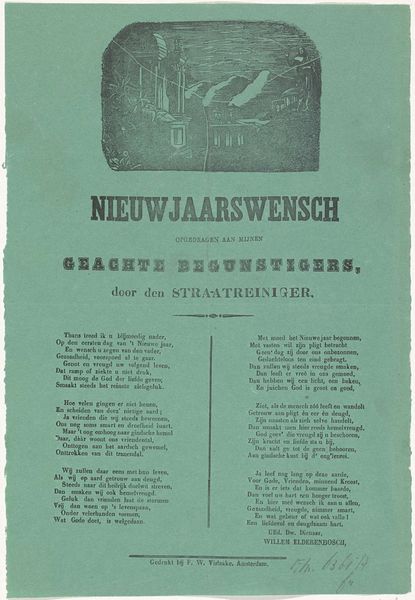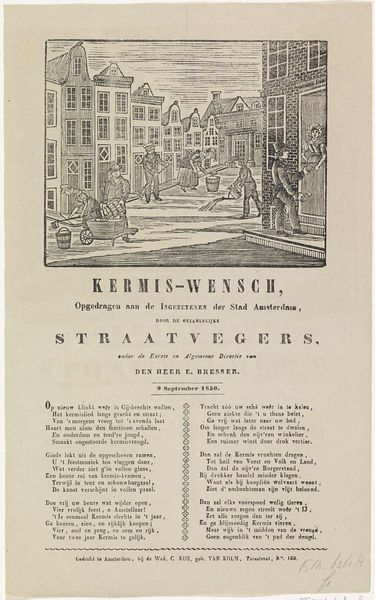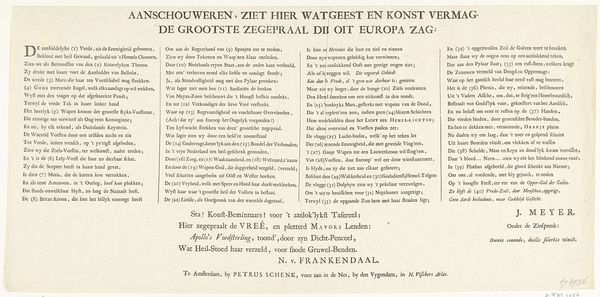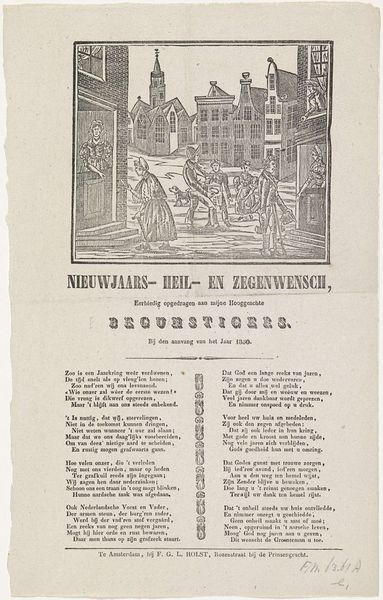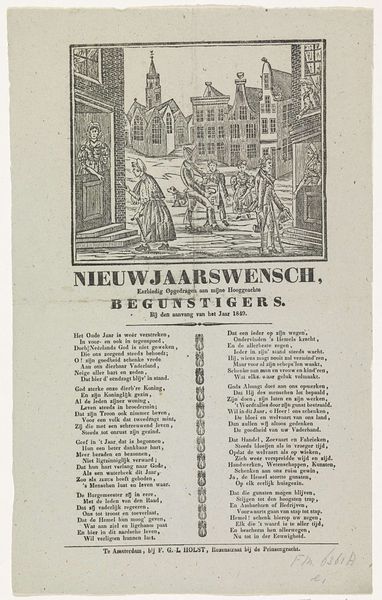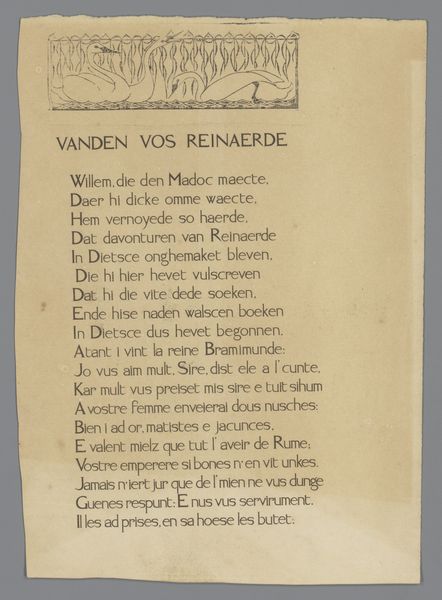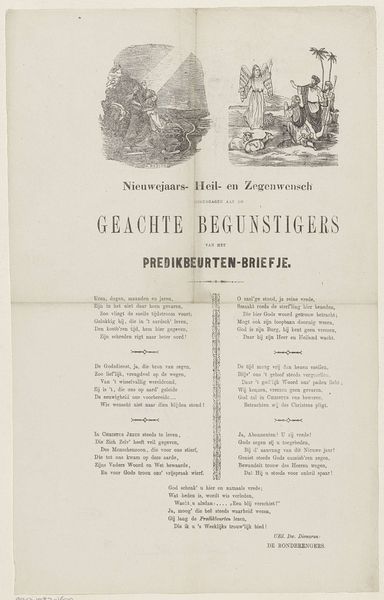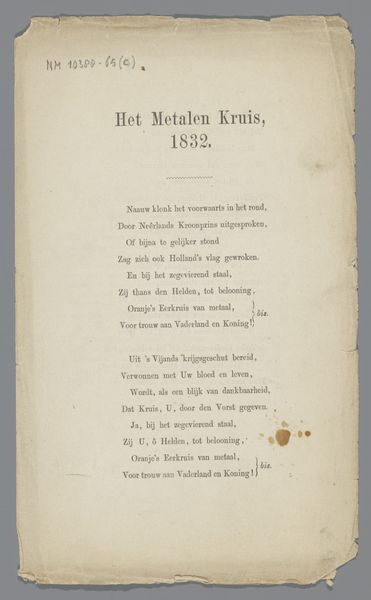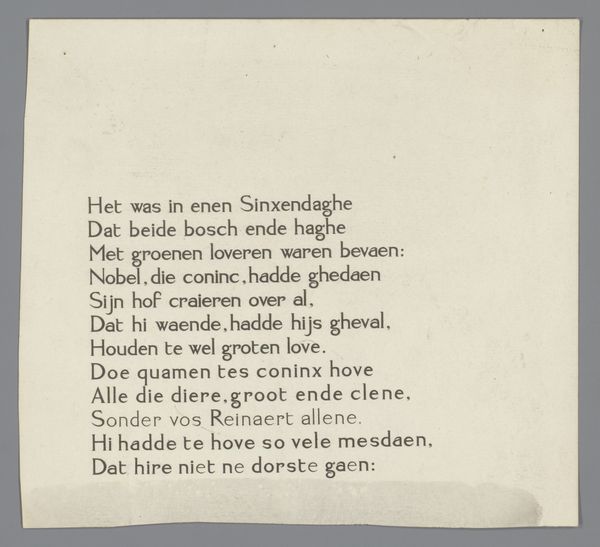
graphic-art, print, textile, paper, engraving
#
graphic-art
#
narrative-art
#
dutch-golden-age
# print
#
textile
#
paper
#
personal sketchbook
#
folk-art
#
engraving
Dimensions: height 310 mm, width 211 mm
Copyright: Rijks Museum: Open Domain
Around 1860-1870, an anonymous artist in Amsterdam created this print using etching or wood engraving, a technique common for mass-produced images. The print, titled "Kermisprent van de Amsterdamse straatvegers" or "Fairground Print of the Amsterdam Street Sweepers", connects to the festive traditions and social dynamics of the time. These prints were often sold at fairs, serving as both entertainment and social commentary. The image combines visual elements with written text, reflecting the culture of popular print. Consider the social hierarchy implied by the contrast between the well-dressed figures and the street sweepers. This reflects the economic and social structures of 19th-century Amsterdam, a bustling port city with a significant divide between the wealthy merchant class and the working class. For more information, explore archives of Dutch popular culture, fairground ephemera, and institutional records of social welfare during this period. Understanding art requires us to examine the conditions in which it was made and received.
Comments
No comments
Be the first to comment and join the conversation on the ultimate creative platform.
